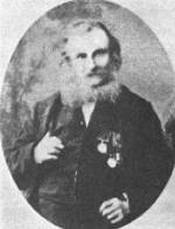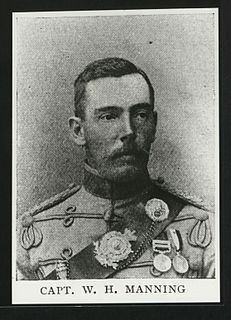 W
WGeneral Sir John Cheape was a Scottish general in the British Army in South Asia.
 W
WMajor Herbert Mackworth Clogstoun VC was a recipient of the Victoria Cross, the highest and most prestigious award for gallantry in the face of the enemy that can be awarded to British and Commonwealth forces.
 W
WThomas Esmonde, VC was a British Army officer and an Irish recipient of the Victoria Cross, the highest award for gallantry in the face of the enemy that can be awarded to British and Commonwealth forces.
 W
WGeneral Alexander Fraser, was a British Army officer in the Royal (Bengal) Engineers, who served in India and Burma. He was especially well known for the construction of the Alguada Reef Lighthouse in Burma in 1865. He was also in charge of the construction of an iron bridge over the river Gomti in Lucknow in 1844.The 2,500 plus pieces of the iron bridge fabricated by Butterley Company of Ripley, Derbyshire had been left for more than 20 years without erection owing to the death of the Nawab who had ordered the bridge, until a successive Nawab who wanted the bridge to be completed came to power. The bridge had been designed by John Rennie in 1814.
 W
WCharles Irwin, VC, was born in Manorhamilton, County Leitrim, and was an Irish recipient of the Victoria Cross, the highest and most prestigious award for gallantry in the face of the enemy that can be awarded to British and Commonwealth forces.
 W
WBrigadier-General Sir William Henry Manning, was a British Indian Army officer and colonial administrator.
 W
WJames McGuire VC was an Irish recipient of the Victoria Cross, the highest award for gallantry in the face of the enemy that can be awarded to British and Commonwealth forces. The V.C. was later forfeited.
 W
WJames George Smith Neill was a Scottish military officer of the East India Company, who served during the Indian rebellion of 1857. His father was Colonel Neill.
 W
WGeneral Robert Napier Raikes was a British Indian Army officer who became General of the Remount, responsible for the provision of horses throughout the British Indian Army, in 1889.
 W
WLieutenant General Sir Scudamore Winde Steel, was a British Army officer of the East India Company.
 W
WGeneral Sir Richard Chambré Hayes Taylor was a senior British Army officer who served in the Second Anglo-Burmese War, the Crimean War and the Indian Mutiny. Joining the General Staff in 1860, he was the British Army's Inspector General of Recruiting, then Deputy Adjutant-General to the Forces, briefly Adjutant-General, and finally for three years Governor of the Royal Military College, Sandhurst. He was also Colonel of the Queen's Own Cameron Highlanders and the East Surrey Regiment.
 W
WField Marshal Garnet Joseph Wolseley, 1st Viscount Wolseley, was an Anglo-Irish officer in the British Army. He became one of the most influential and admired British generals after a series of successes in Canada, West Africa, and Egypt, followed by a central role in modernizing the British Army in promoting efficiency. He served in Burma, the Crimean War, the Indian Mutiny, China, Canada and widely throughout Africa—including his Ashanti campaign (1873–1874) and the Nile Expedition against Mahdist Sudan in 1884–85. Wolseley served as Commander-in-Chief of the Forces from 1895 to 1900. His reputation for efficiency led to the late 19th century English phrase "everything's all Sir Garnet", meaning, "All is in order."